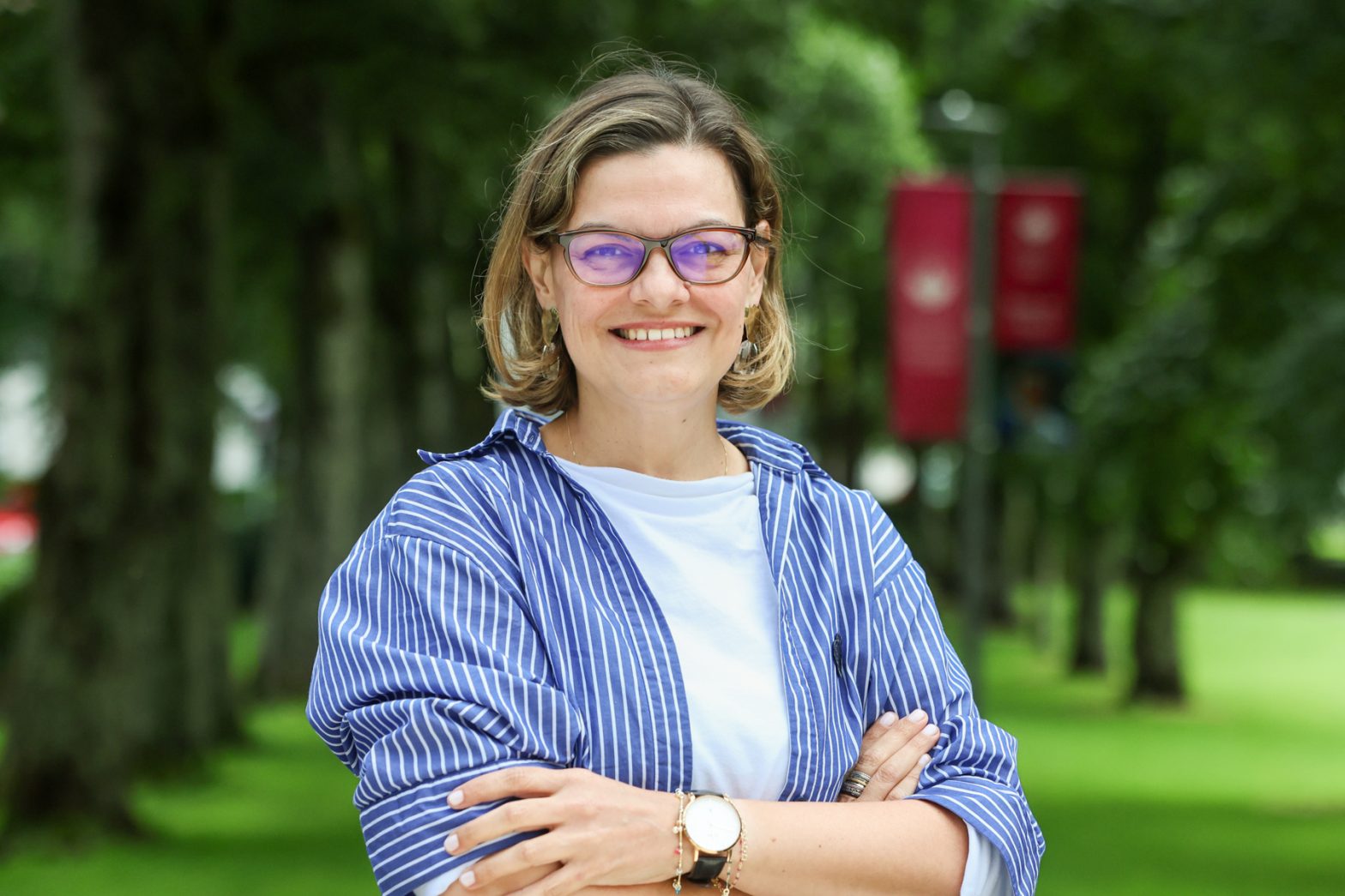When Dr Catalina Vallejo Giraldo was growing up in Medellin, Colombia, her mother, a bacteriologist, and her father, a pharmaceutical chemist, instilled a curiosity in their daughter about the natural world, and she witnessed their persistence when solving scientific problems. “Science was very much on my radar,” says Catalina.
Ireland was not on her radar, though, until she came to the University of Galway in 2013 to do a PhD with Professor Manus Biggs, who is part of the CÚRAM Research Ireland Centre for Medical Devices.
“I carried out research there on electro-active materials to coat electrodes that are used to stimulate the brain, and the work ignited a deep interest for me in how engineering, science and medicine can work together to better understand and improve brain health,” she says.
Next, Catalina moved to the UK for five years, but in 2022, she returned to Galway to take up a position with the University of Galway as a Lecturer in Biomedical Engineering.
“This opportunity also allowed me to start my lab at CÚRAM,” she says. “I knew Ireland, the University, my discipline and CÚRAM would be a supportive place for me to grow my research.”
Today, Catalina holds a joint appointment between the University of Galway’s School of Medicine and School of Engineering, and her work focuses on how physical variables such as forces and space affect brain cells, and uses this information to functionalise neuromaterials.
“For instance, we grow assemblages of brain cells in the lab, and in one line of research, we subject them to forces equivalent to traumatic brain injury,” she explains. “We do this to understand better how cells and brain regions respond to trauma under different conditions.”
Catalina is also developing a material platform called TrapKill, which she has designed to compress cells into channels. The aim is to improve treatments for brain cancer, she explains.
“The concept is that after a tumour is removed, the developed system can be inserted into the remaining cavity, where it can ensnare cancer cells that were left behind or that grow after surgery, and compress them to make them more susceptible to chemotherapy and radiation,” she says. “It’s an ambitious project, and we are seeing positive preliminary results.”
The TrapKill project, which involves several collaborations in Belgium and France, is funded through a European Research Council grant. Such awards are difficult to attain, but Catalina credits the network of researchers in Ireland who worked with her as she articulated her ideas and saw what could be feasible.
“People were supportive, they were open, and they wanted me to succeed as an early-career researcher,” she says.
“My hope is that my research on neuromaterials will translate into better treatments for brain illness. We see so much cancer and brain-related conditions in the world today. I believe that medical devices and materials, and a better understanding of their physical and biological interactions with the brain, will open up more options for improving people’s health.”
Minister for Further and Higher Education, Research, Innovation and Science, James Lawless TD, has announced the launch of Global Talent Ireland, a bold new initiative to attract outstanding international research leaders to Irish Higher Education Institutions and public research bodies.
Managed by Research Ireland, Global Talent Ireland will support the recruitment of both mid-career rising stars and established research leaders. The programme will fund research across all disciplines within Research Ireland’s remit, with a focus on strategic areas of importance to Ireland, and provides the resources needed to establish or relocate world-class research teams in Ireland.
A two-stage application process begins with an Expression of Interest (EoI) due by 28 August 2025, followed by a full proposal deadline in October 2025. Full details can be found here.
